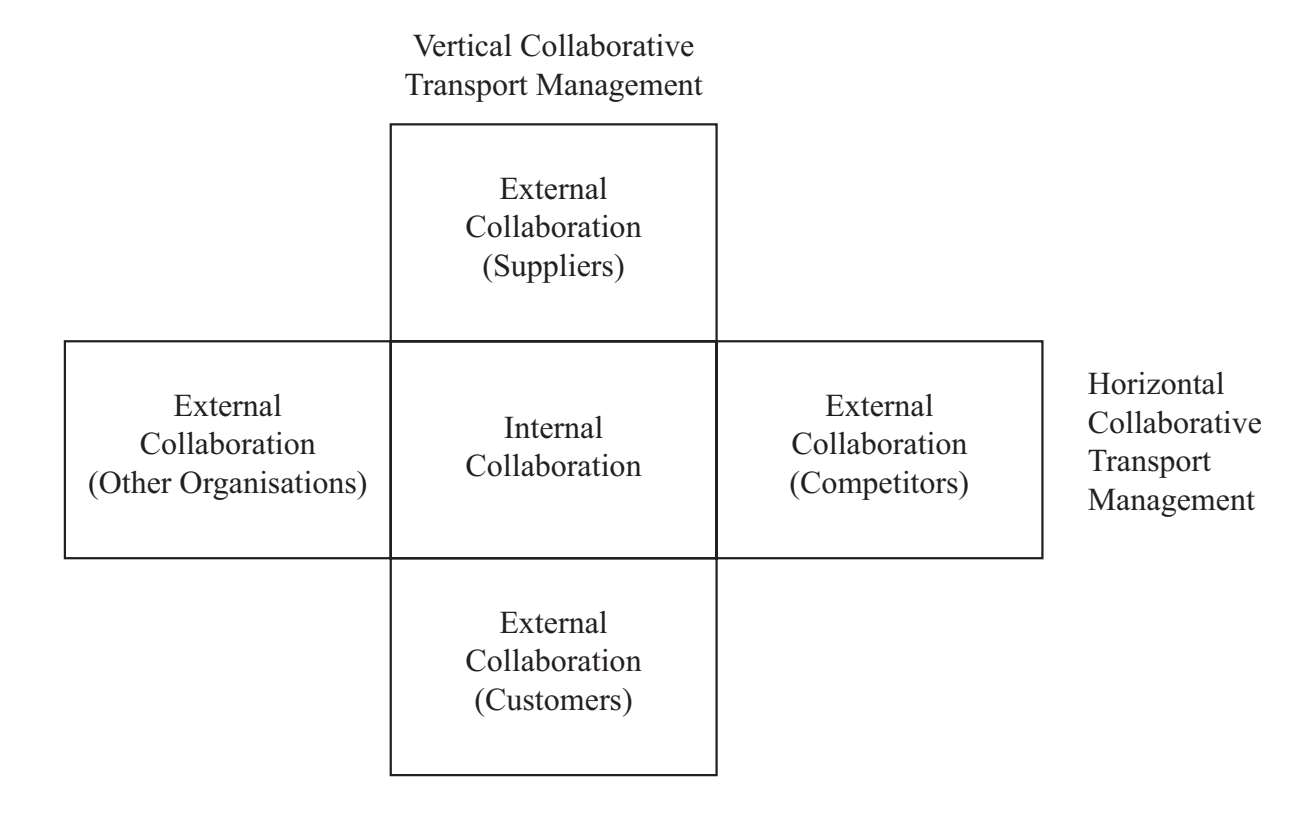




In the past few years, logistics horizontal collaboration (LHC) has been gaining attention as a new business concept that can help to make the logistics sector more efficient, effective and sustainable. Horizontal collaboration in logistics is defined as active collaboration between two or more firms that operate at the same level of the supply chain and perform comparable logistics functions (Cruijssen et al. 2007a).
An important distinction from traditional supplier-to-customer logistics collaboration is that horizontal collaboration encourages coordination and integration across rather than along the supply chains (as shown in Figure 1.1). This collaboration could be organized between suppliers upstream, or between customers downstream, who might belong to different supply chains but who are willing to form partnerships to share part of their logistics resources, such as transportation and warehousing. Under this logistics paradigm, a fragmented demand in logistics system can be effectively orchestrated to enable large, stable and structural freight flow, while a dispersed supply, such as transport capacity, can be additionally deployed at the cross-supply chain network level where its overall utilization rate can go up significantly, leading to greater cost savings.

Figure 1.1 Differences between vertical and horizontal collaboration in logistics and transport(Mason et al. 2007)
One notable form of LHC is the collaborative distribution of goods between compatible shippers. In traditional vertical logistics collaboration, major interactions are between shippers and customers with the priority to coordinate the logistics process so that relevant shipments could be delivered on-time. In such situations, the logistics distributions from the various shippers to the various customers are independent and separate. From the network perspective, there are considerable overlaps of the transport networks and goods are moved in parallel supply chains,which is very inefficient. Alternatively, horizontal logistics collaboration encourages shippers across these parallel supply chains to work more closely and proactively to plan and consolidate their goods in more synchronized ways, hence increasing the load utilization and cutting down the cost before shipments are delivered to the next stage of the supply chain.
Horizontal collaboration is in a sense an effective supplementation to supply chain logistics vertical collaboration to enable better optimization over the entirety of the logistics processes in the supply chain network. It can be expected that by collaborating horizontally, considerable improvements can be achieved in terms of asset utilization, the total logistics cost and the carbon footprint, while also, in many cases, improving the service level towards customers. Horizontal collaboration has until now, however, not been widely practised in the logistics marketplace, since its unfamiliar and complex nature has made it difficult to be implemented broadly(Palmer et al. 2012). Consequently, there is a strong need for both practitioners and researchers to contribute more relevant research in this area, so that better understandings can be developed regarding the forms and characteristics of such new collaboration model in logistics, eventually facilitating more successful implementations and thus contributing to a future improvement in the logistics industry.